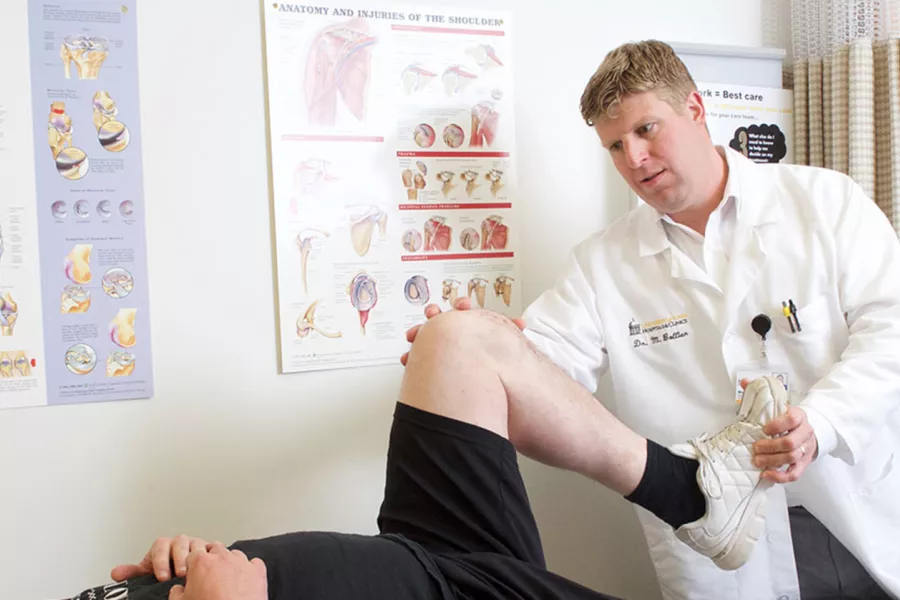Can what you eat affect your injury recovery timeline?
University of Iowa Health Care research has found that malnutrition is associated with lower muscle mass and mobility.

Researchers from the University of Iowa Department of Orthopedics and Rehabilitation are investigating the relationship between malnutrition and the loss of muscle and mobility in older adults who had a hip fracture.
UI Health Care orthopedic surgeon Michael Willey, MD, in collaboration with researchers at Johns Hopkins University and the Slocum Center for Orthopedics & Sports Medicine, documented the loss of muscle and mobility after a hip fracture.
As part of their study, Willey and his colleagues found that half of older adults were at risk for malnutrition or were malnourished at the time of their hip fracture. Malnutrition was associated with lower muscle mass and mobility. In the first six weeks after injury, these older adults lost 10% of their overall muscle mass. Loss of muscle also correlated with loss of mobility.

Concerned about a joint injury?
Recurring or lingering joint pain might be a sign of a more serious issue.
The link between nutrition and recovery
The research team’s previous work found that supplementing the patients’ diets with essential and conditional amino acids prevented the loss of muscle mass after an injury.
Amino acids are the building blocks for proteins. They are vital for the body to perform many crucial functions, such as growing and repairing muscle and tissue, and boosting the immune system.
Most people get essential amino acids from foods, but many people have insufficient diets. Pain and limited mobility after hip fractures further prevent access to healthy foods.
Taking supplements with essential and conditionally essential amino acids after hip fracture is a promising intervention, Willey says.
“Many patients have limited access to healthy foods. It’s important to understand how common food insecurity is in the orthopedic trauma population so we can better target interventions to improve outcomes,” Willey says.
Improving nutrition to improve recovery
Older adults with hip fractures likely have the highest potential to benefit from nutritional interventions, Willey says. The group’s future research aims to determine whether nutrition supplements can help prevent the loss of muscle, mobility, and independence.
While there are hurdles when studying nutrition—baseline nutrition status can vary among patients, and it can be a challenge to get participants to complete an entire nutrition program, for example—Willey believes this research will help improve recovery outcomes for patients in need.
“There is a lack of research investigating the impact of nutrition after a fracture,” Willey says. “But as we see from the previous studies, there is a huge need to expand how we help our patients recover after a traumatic injury.”
Willey hopes this expanded clinical research will lead to better-designed programs that supply patients with the nutritional supplements they need to improve their diets and recovery.
“If hospitals adopt these kinds of programs, it will help improve the outcomes for high-risk patients who experience food insecurity,” Willey says. “It's important that we, as their care team, do everything we can to help them recover, including identifying obstacles and finding solutions.”